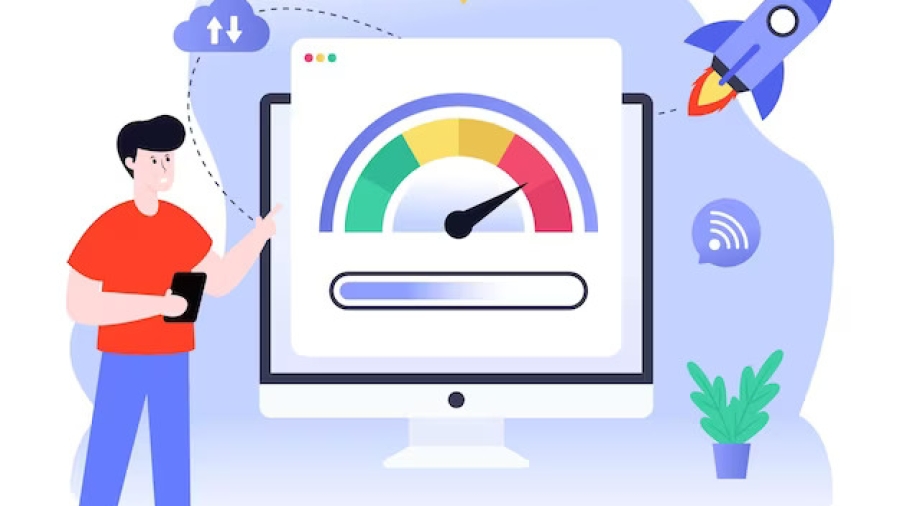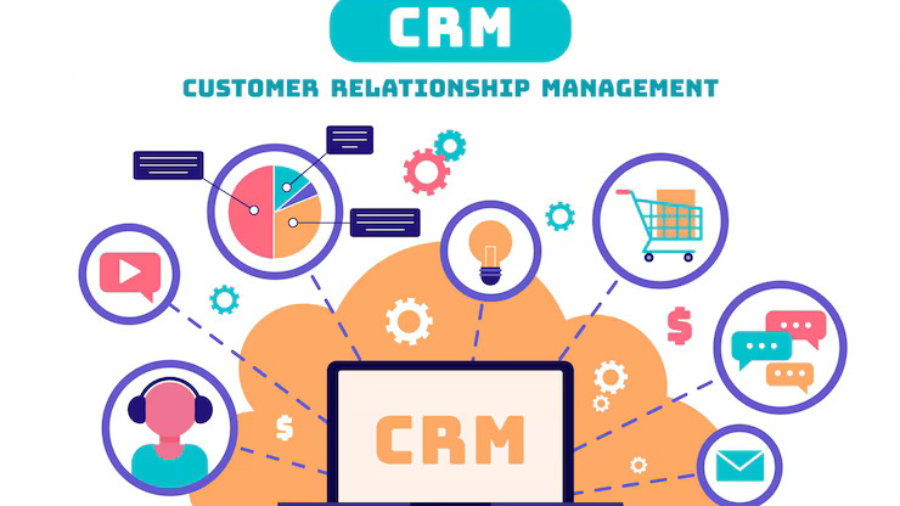This sentence takes about two seconds to read. Coincidentally, that’s the maximum time most users expect a website to load.
Two seconds may seem short, but when browsing, even a one-second delay can feel like an eternity. This isn’t a quirk of impatience — we’ve become accustomed to fast internet speeds. Our favorite sites invest significant resources to optimize their load times.
Why? Because website speed impacts everything — from user satisfaction to conversions and revenue. Whether you run an ecommerce platform, a business site, or a blog, page load times can determine the success of your online presence.
To ensure optimal performance, speed must be considered from the design phase and regularly monitored. But website performance is complex and requires specialized knowledge to improve. In this guide, we’ll break down what good performance looks like, why it matters, and how to achieve it.
What is Website Performance?
Website performance refers to how quickly a page loads and displays content in a browser. Optimizing performance involves enhancing these speeds through various methods, resulting in a faster and more efficient site.
Good performance is essential for any website. First impressions are crucial — a slow site can leave a negative impression, impacting visitor retention, conversions, and overall brand perception.
Why Website Performance is Crucial
We’ve all encountered slow websites, and while this may seem like a minor inconvenience, it can have significant consequences for businesses. Let’s explore how speed impacts various aspects of your website.
User Experience (UX)
Every design decision on a website should prioritize user experience, and speed is a key factor. If your site is slow, users will have a frustrating experience, which can negatively affect your business. On the other hand, a fast site improves UX, leaves a positive impression, and increases the likelihood of repeat visits.
But how fast is fast enough? According to Google, a website should load in under two seconds to ensure a smooth user experience. The faster, the better — and with the right strategies, you can achieve this target.
Visitor Retention
The goal of website design is to capture and maintain visitor interest. However, a slow-loading page can quickly turn users away. Studies show that two extra seconds of load time can double your bounce rate, and over half of mobile users will abandon a page that takes more than three seconds to load. Meeting performance expectations is critical to retaining visitors.
Conversions and Sales
Website performance is directly linked to conversions and sales. Faster websites lead to higher customer satisfaction, which boosts conversion rates. In fact, for every additional second of load time, conversion rates drop by an average of 4.42% within the first three seconds. Ensuring your website performs optimally can lead to a significant impact on your bottom line.
Brand Perception
A slow website can negatively affect how users perceive your brand. Just like a broken front door at a restaurant might make you question the quality of its food, a slow website can lead visitors to doubt your credibility. Poor performance can make your site appear unsafe, unreliable, or outdated, harming your brand’s reputation.
Mobile Experience
The rise of mobile browsing has forced businesses to rethink web design. Websites must be optimized for mobile devices, which have fewer resources than desktops. Mobile pages typically load 87% slower than desktop ones, but users still expect a fast, seamless experience. A website that doesn’t cater to mobile users risks losing a significant portion of its audience.
Search Engine Optimization (SEO)
Page speed is also a factor in SEO rankings. Google considers website performance when determining search result placement. While relevance is the most important ranking factor, speed can still influence your position. A faster website may outrank slower competitors if all other factors are equal.
Key Factors Influencing Website Performance
Many components contribute to how quickly a website loads. Let’s explore the main factors that impact performance and how you can optimize them.
Page Weight
Page weight refers to the total size of a webpage, including all the resources (code, images, embeds) it requires. The larger the page, the longer it takes to load. Optimizing page weight is crucial for improving performance.
Simplicity is key when it comes to performance. Complex, resource-heavy pages take longer to load. Minifying code, which removes unnecessary characters, can reduce file sizes without affecting functionality. Plugins and online tools can help with this process.
Images
Images are typically larger than text, so they take longer to load. To speed up your site, use a minimal number of images and optimize them for the web. Resize images before uploading and compress them to balance quality with performance. Formats like JPG, PNG, and SVG are best for the web.
HTTP Requests
Each element on a web page requires an HTTP request to the server, and the more requests, the slower the page. Simplifying your site design can reduce these requests. Be mindful of external resources, like ads or embeds, which require additional HTTP requests and can slow down performance.
Browser Caching
Caching stores website data temporarily on the user’s device, allowing pages to load faster on return visits. Implement caching for static content to save bandwidth and reduce load times. Most website providers offer instructions on enabling caching.
File Compression
Compressing files makes them faster to send over the internet. GZIP compression, used by 80% of websites, can reduce file sizes without losing data. Make sure your server supports file compression to improve load times.
Render-Blocking Code
Some CSS and JavaScript can block other resources from loading quickly. Removing or deferring these scripts can speed up the rendering of your site’s content, especially the visible parts that users interact with first.
Hosting
A reliable hosting provider is essential for website performance. Shared hosting can slow your site if other websites on the server experience high traffic. Upgrading to a more robust hosting plan can ensure consistent speed.
Geographic Location
The physical distance between a user and your server affects load times. A content delivery network (CDN) can help by distributing your website’s files across global servers, delivering content from the server closest to the user.
Permanent Redirects
Redirects send users from one page to another, which can slow down load times. Minimize unnecessary redirects to enhance performance.
How to Measure Website Performance
Before optimizing your website’s performance, it’s crucial to assess its current speed. A great way to do this is by using online tools that conduct speed tests for your webpages.
These tools are typically free and easy to use. Simply input the URL of the webpage you want to test, and the tool will generate a performance summary. Most tools also provide a score that reflects the overall performance, along with detailed insights into areas that might be slowing down your site, allowing you to address any pressing issues quickly.
Here are a few important tips when using speed testing tools:
- Stick to one tool. Each tool calculates performance differently, so using multiple ones may lead to confusing or inconsistent results.
- Test multiple times. Run the test with both cached and uncached versions of your website. Cached versions usually load faster, so an uncached test might reveal the true issues.
- Don’t stress over a perfect score. Achieving a perfect score isn’t always realistic. Aim for optimal performance, but understand that certain elements may affect your score based on your site’s specific needs.
Here are some of the most popular speed testing tools:
Website Grader
Powered by Google’s Lighthouse, Website Grader offers an overall performance score out of 100, considering factors like page size, HTTP requests, caching, and image size. The tool also evaluates SEO, mobile experience, and security, giving you a broad view of your site’s effectiveness.
PageSpeed Insights
Google’s PageSpeed Insights assesses performance on both mobile and desktop devices, providing a score from 0 to 100. A score above 80 is considered excellent. The tool is highly detailed, offering specific suggestions to improve your page speed and an accessible breakdown of performance metrics.
Pulsetic
Pulsetic focuses on website monitoring, offering detailed performance insights like speed, uptime, and regional metrics. It’s especially useful for multilingual or global websites, providing reports for different regions. Pulsetic can also notify you via phone, SMS, email, or Slack if your website goes down.
Pingdom
In addition to monitoring, Pingdom offers a free speed test that breaks down your site’s performance by file type and HTTP requests, giving suggestions for improvement. You can also run tests from different locations to see how your site performs globally.
GTmetrix
GTmetrix uses Lighthouse to analyze performance and offers detailed suggestions, along with features like a speed visualization, historical performance data, and video recordings of tests.
WebPageTest
A more advanced tool, WebPageTest allows for testing on multiple browsers and global locations. It provides highly detailed reports, making it better suited for web experts rather than beginners.
Key Website Performance Metrics
After testing your site, you may encounter some unfamiliar terms. Performance isn’t defined by a single number; several metrics help measure how fast a page actually loads. Here’s a breakdown of key metrics:
- Page Load Time: Measures how long it takes for the entire webpage to load. Typically, websites should load in two to three seconds.
- Time to First Byte (TTFB): This indicates how quickly your server responds to a request. Slow TTFB can suggest server issues, which might require upgrading or using a Content Delivery Network (CDN).
- Time to Start Render: Refers to how quickly content begins to display on the page, letting users know the site is loading. Top-performing sites usually show content within one second.
- Time to Title: Measures how fast the website title appears in the browser tab, giving users an initial sign that the page is loading.
- Time to Interactive: The time it takes for users to interact with elements on the page, such as clicking buttons or scrolling. Users consider the site ready to use when this metric is low.
- DNS Lookup Time: This is how long it takes for the Domain Name System to translate the domain name into an IP address, necessary for retrieving the site’s resources. DNS lookup should take no more than 150 milliseconds.
User-Centered Performance Indicators
These metrics are based on user experience and can also indicate slow load times:
- Bounce Rate: The percentage of users who leave the page without interacting. High bounce rates may suggest poor performance or content that doesn’t engage users.
- Session Duration: This measures the time users spend on your site. A low session duration could indicate frustration with page load times.
- Conversion Rate: The percentage of visitors who complete a desired action, such as making a purchase or signing up. Faster websites tend to have higher conversion rates.
- Error Rate: The percentage of HTTP requests that result in errors. A high error rate can slow down page performance and drive users away.
Monitoring Website Performance
After addressing immediate performance issues, regular monitoring is essential. This ensures your website
continues to perform well over time. Monitoring tools fall into two categories:
- Real User Monitoring (RUM): Tracks how real users interact with your site and provides detailed reports on performance. This is also known as passive or reactive monitoring.
- Synthetic Monitoring: Simulates real user interactions at regular intervals to detect potential performance issues before they affect users.
Here are a few tools to help monitor your website performance:
- Pingdom: Known for its real-time alerts, Pingdom offers synthetic monitoring to catch performance issues before they impact users.
- Uptrends: Offers proactive and reactive monitoring with easy-to-read reports and performance tests from over 200 global locations.
- Site24x7: A comprehensive tool that monitors not only website performance but also servers and applications, making it a good option for advanced users.
- TeamViewer: Provides performance tests and alerts from over 30 global locations, but its user interface may be less intuitive than competitors.
Boost Your Website’s Speed
Optimizing website speed is a continuous process. While immediate changes may lead to quick wins, long-term improvement will require regular monitoring and adjustments. Fast websites don’t just deliver better user experiences—they also rank better in search engines, improve mobile traffic, and increase conversion rates.
Remember, website speed is about more than just speed. It’s about building trust, improving your brand’s perception, and creating an online experience that encourages users to stay, engage, and take action. Even small performance improvements can have a big impact.
Conclusion
Website speed is more important than ever. It affects user experience, retention, sales, and even search rankings. By optimizing factors like page weight, images, and hosting, you can ensure your site meets the expectations of today’s fast-paced internet users. Start prioritizing performance today to see measurable results in traffic, conversions, and overall success.







